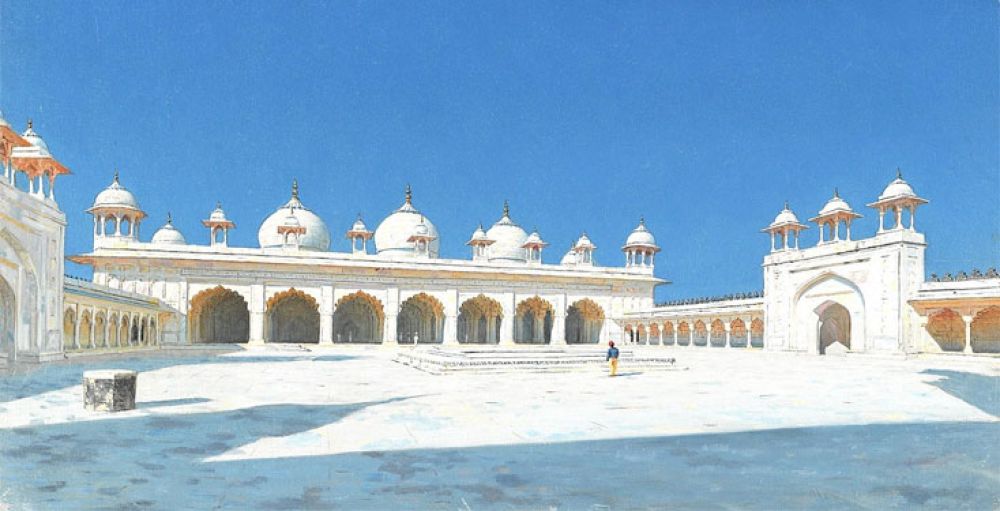

Moti Masjid, often referred to as the "Pearl Mosque", stands as a splendid example of Mughal architectural prowess within the historic city of Agra, India. Commissioned by Emperor Shah Jahan, the mosque was constructed between 1648 and 1654, during the same period when the emperor was also building the world-renowned Taj Mahal. The mosque was intended for the private use of the royal members residing in the Agra Fort.
The name "Moti" translates to "pearl", which is indicative of the mosque's pristine, white marble façade that is said to glow and look like a pearl during the soft light of dawn and dusk. Notably, the masjid serves as one of the temple's perfectly integrated into the Agra Fort complex, which has been designated as a UNESCO World Heritage site.
Tourism in Agra has deep historical roots, with the city housing a multitude of significant Mughal-era monuments, attracting travelers and historians from around the world. While the Taj Mahal is the most prominent figure in Agra’s tourism, over time, sites like the Agra Fort and its interiors such as Moti Masjid have also garnered significant attention.
Initially, tourism was primarily driven by foreign visitors who were interested in exploring the rich history of the Mughal Empire. However, in recent decades, there has been substantial growth in domestic tourism, with Indian nationals rediscovering the architectural marvels of their country. Moti Masjid’s emphasis on spiritual purity and architectural finesse has made it an essential stop for tourists visiting Agra.
Current trends in tourism in Agra reflect a blend of traditional sightseeing with experiential and sustainable tourism. Tourists are looking for immersive experiences, such as guided tours that tell stories about the historical and cultural significance of the monuments including Moti Masjid. There is also a growing interest in night tourism, with visitors wishing to behold the grandeur of Agra's monuments under the stars, though accessibility for nocturnal visits may vary.
Awareness regarding the preservation of historical sites has increased, with a focus on sustainable tourism practices to protect these treasures for future generations. Tourists are being encouraged to minimize their environmental impact and respect the sanctity of religious sites like the Moti Masjid.
Moreover, Agra's tourism infrastructure has seen significant modernization, including the development of better transportation facilities, enhanced security for tourists, and digital advancements such as virtual tours, e-ticketing for monuments including the Moti Masjid, and interactive mobile applications that enhance the tourist experience.
COVID-19 has also had an impact on tourism globally, and Agra is no exception. Local authorities and the tourism industry are adapting by implementing stringent health and safety protocols to reassure travelers and provide a safe tourism experience.